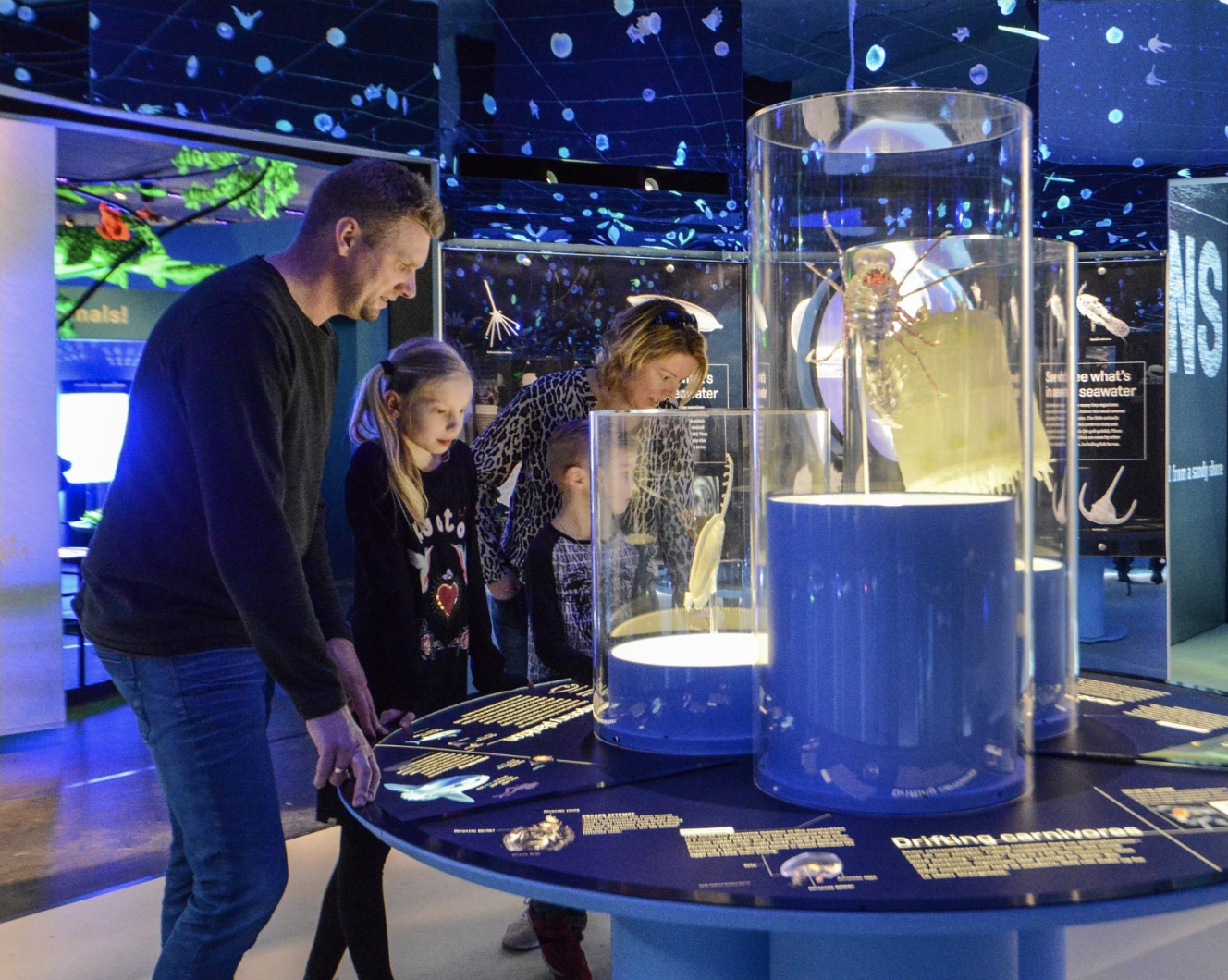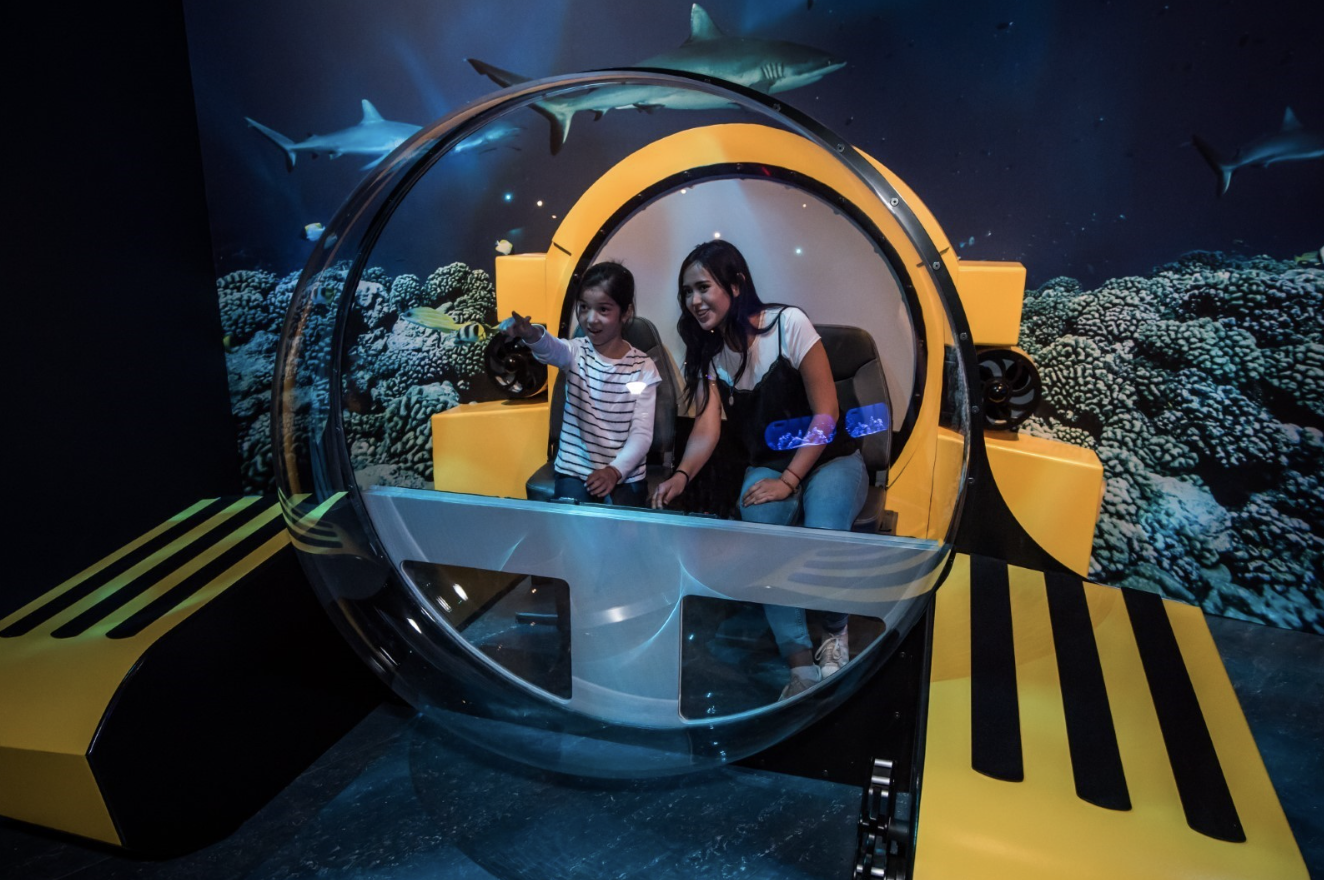
By: Julio Poletti/ @JulioPoletti
The Ocean is a mysterious place. Did you know humans know more about the surface of Mars than our own oceans here on Earth? Crazy!
Here at the Denver Museum of Nature & Science we've curated a spectacular exhibition that lets you dive into the ocean to explore everything from its surface to its deepest floor and get ready to enter another world! In "Unseen Oceans" you’ll discover extraordinary predators, glow-in-the-dark prey and lifeforms beyond anything on land. This alluring exhibition will have families and children stunned at how different our worlds are, above and underwater.
"Unseen Oceans" is now open. Get your tickets here.
Related: Explore "Unseen Oceans" through pictures.
Related: Stunning Ocean-Inspired Art Pieces by Museum Program Coordinator
16 Interesting Facts About Our Unseen Oceans:

Digital Submersible Interactive
Visitors experience the thrill of marine exploration at digital interactive submersible stations as they navigate a virtual submersible around seamounts and make discoveries of their own.
©AMNH/D. Finnin
16. Earth’s oceans have been home to giant animals for hundreds of millions of years.
15. Most ocean life is hidden from our view, because light waves can’t penetrate very far beneath the surface.
14. Only about 10 to 15 percent of the ocean has been accurately mapped.
13. We know the surface of Mars at least 100 times better than the hidden surface of two-thirds of our own planet.
12. Plankton are a diverse group of organisms that mostly drift with the currents—including bacteria, algae, protozoans and animals. Plankton produce well over 50% of the oxygen we breathe.

The oceans’ sunlit zone is inhabited by plankton, organisms that sustain nearly all marine life. Despite their small size, planktonic forms are remarkably diverse. Here, visitors inspect larger-than-life models of unusual and beautiful planktonic species. ©AMNH/R. Mickens
11. Plankton blooms can be so vast they’re visible from space.
10. Larvae of some coral reef fishes can detect the smells and sounds of their home reefs and even swim short distances to reach it.
9. Fluorescence comes from special molecules in the fish’s skin.
8. Instead of simply reflecting light the way most pigments do, fluorescent molecules absorb light, then re-emit it.
7. In medical research, fluorescent pigments are used to highlight activity inside cells, helping us understand cancer and Alzheimer’s disease.

Triton Submersible Photo-Op. A partial replica of a Triton submersible provides a great photo opportunity for visitors who have cameras at the ready. ©AMNH/D. Finnin
6. Tags reveal that great white sharks sometimes dive to 4,000 feet (1,200 m).
5. The sperm whale is the largest of the toothed whales alive today. Males reach about 52 feet (16 m) in length and females about 36 feet (11 m).
4. The teeth of sperm whales don’t emerge until adolescence.
3. Jellies are a key element in the ocean ecosystem, feeding on plankton and preyed on by bigger marine creatures, including whales, ocean sunfish and leatherback turtles.
2. A Triton-1650 submersible can take one pilot and two passengers down 1,650 feet (500 m).
1. To make sure there will still be fish to catch in future years, many countries are setting aside safe places for fish and other organisms to breed and grow. In these “marine protected areas,” fishing, mining and pollution are restricted—and marine populations are bouncing back.
